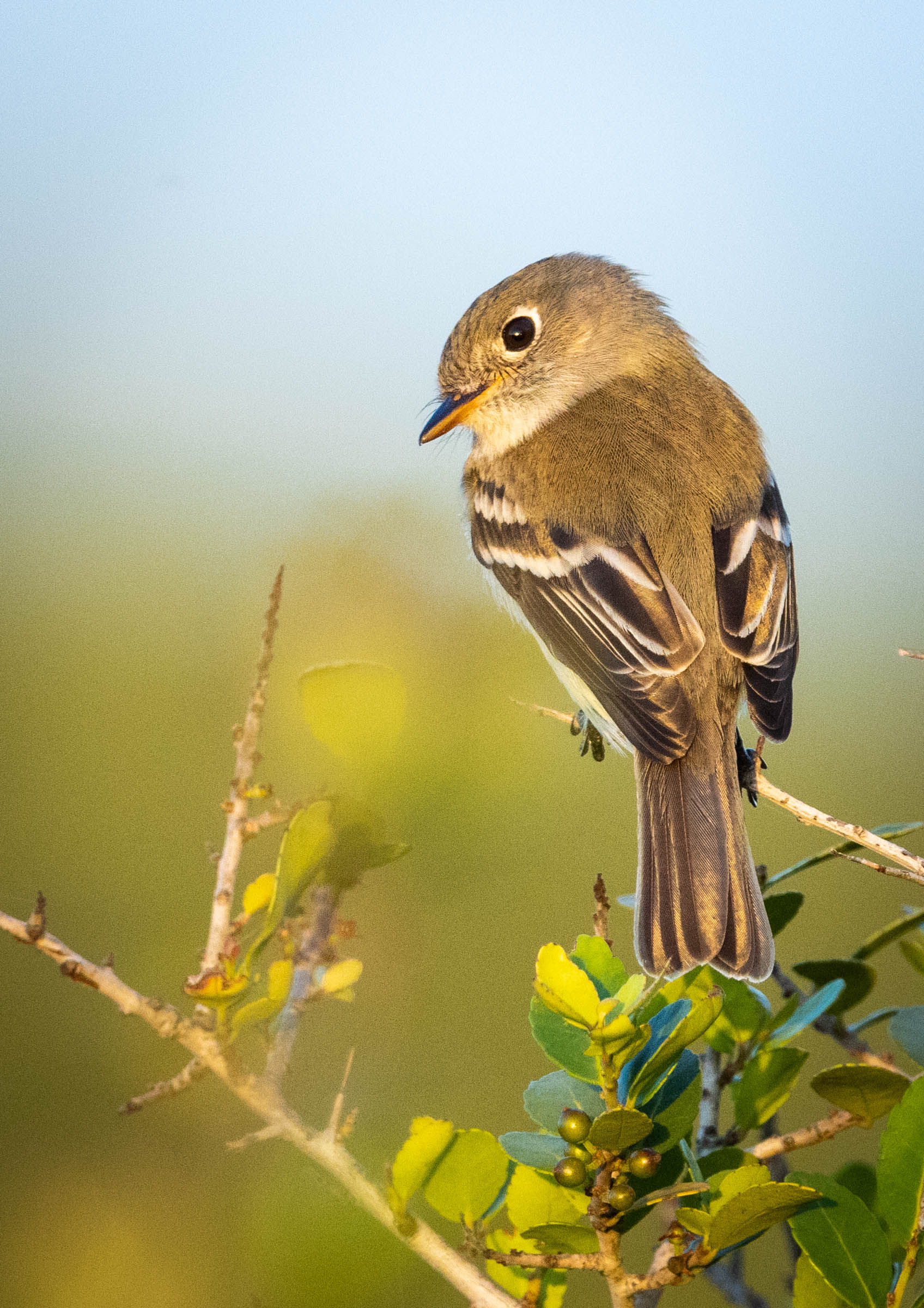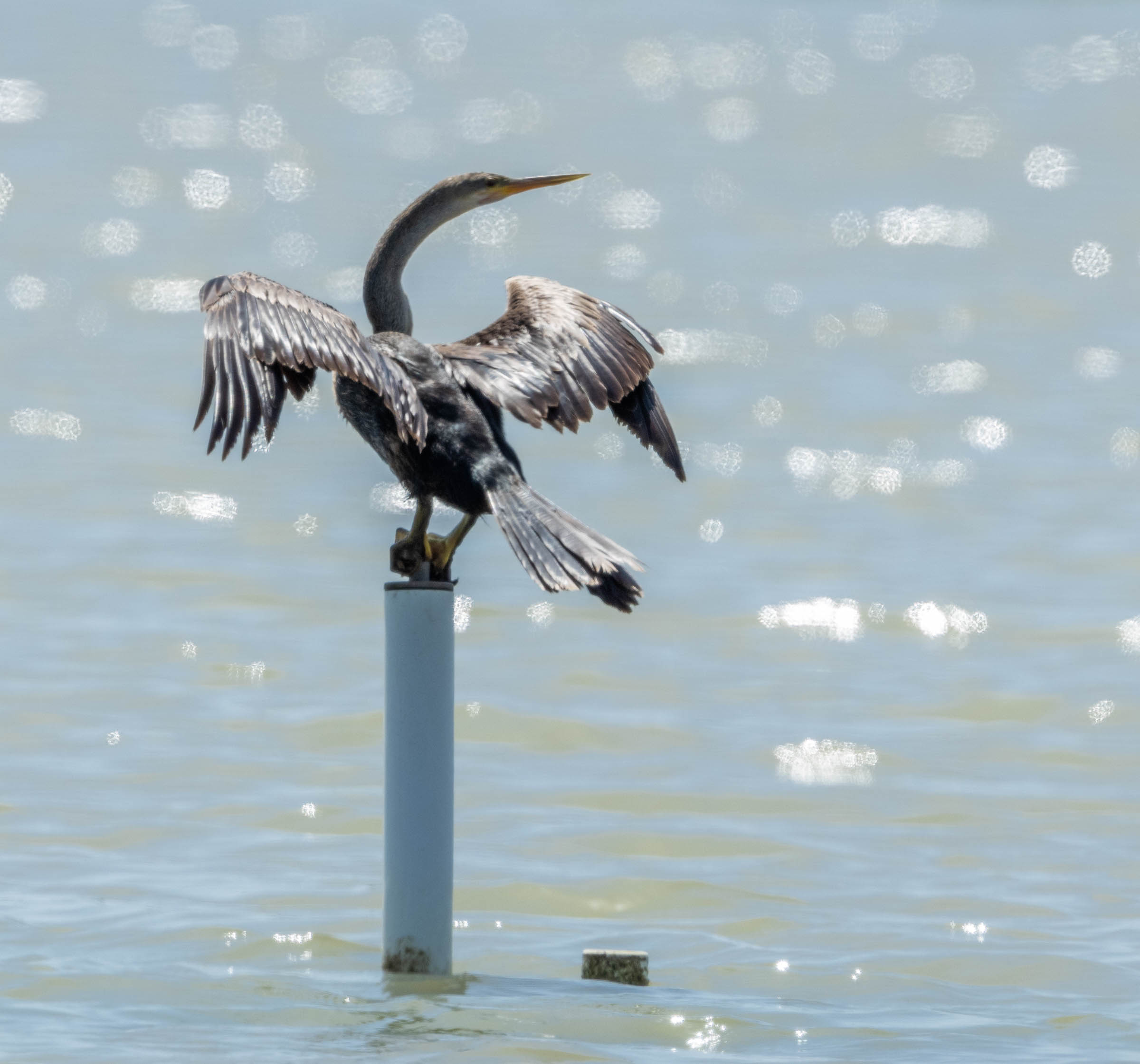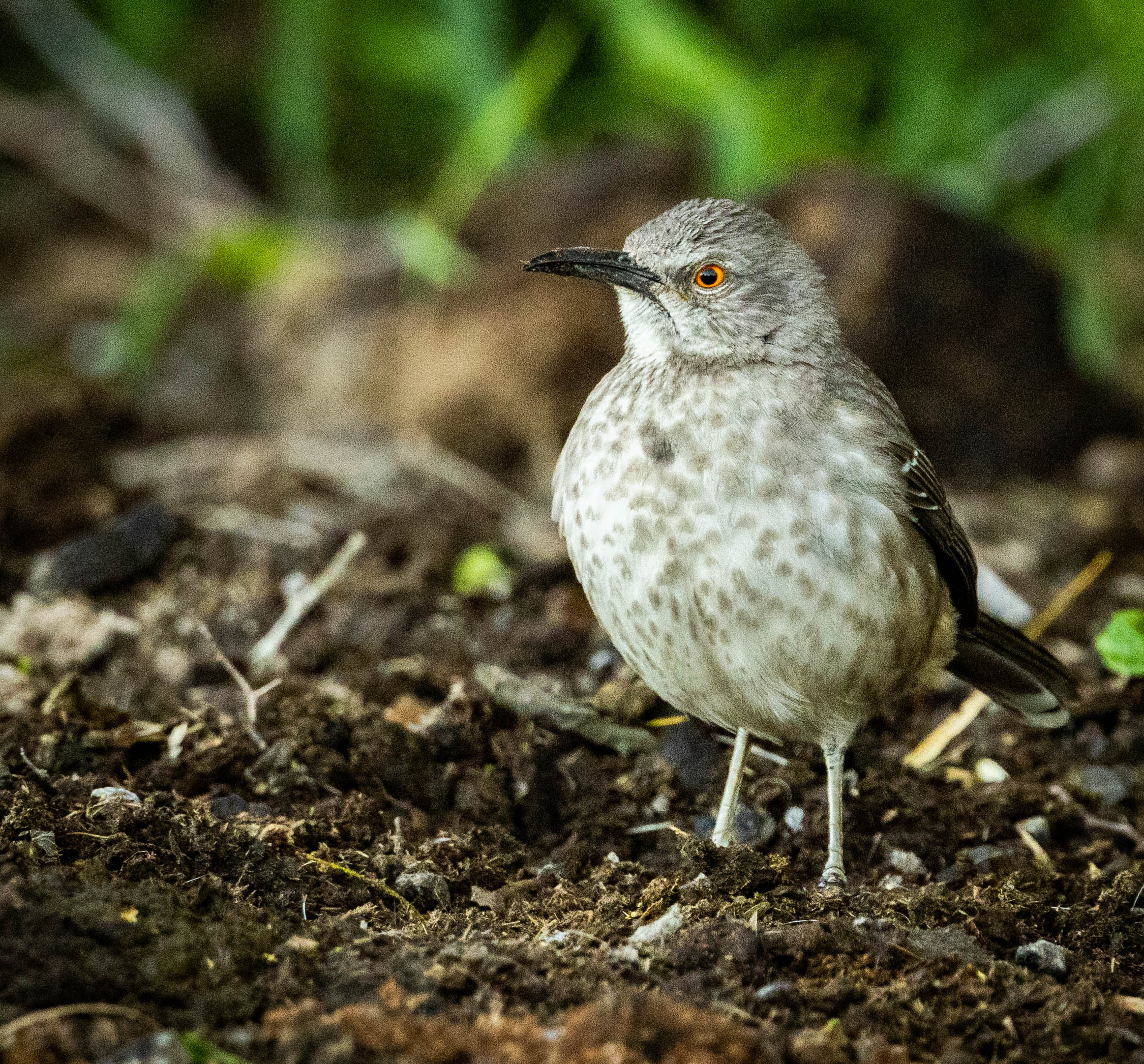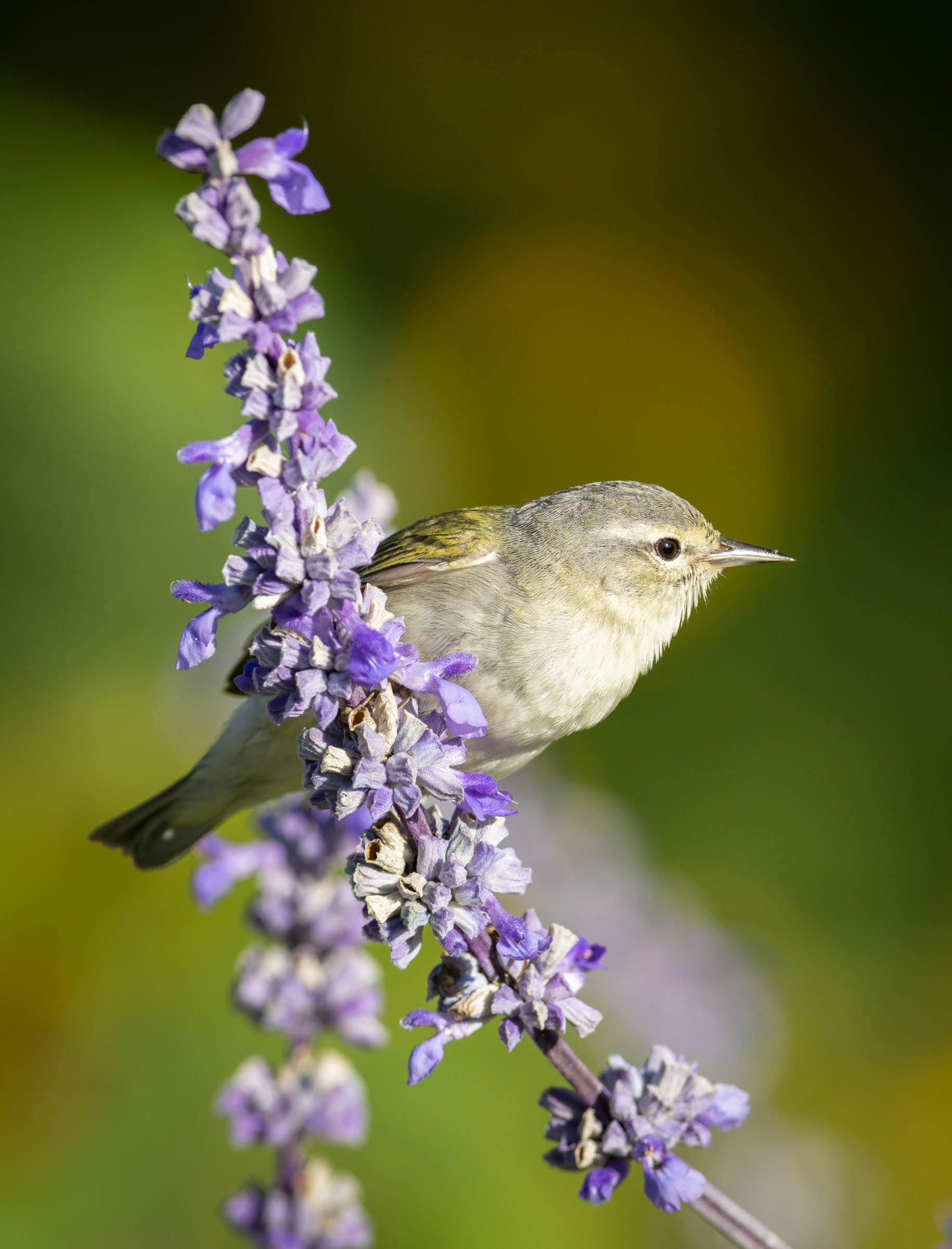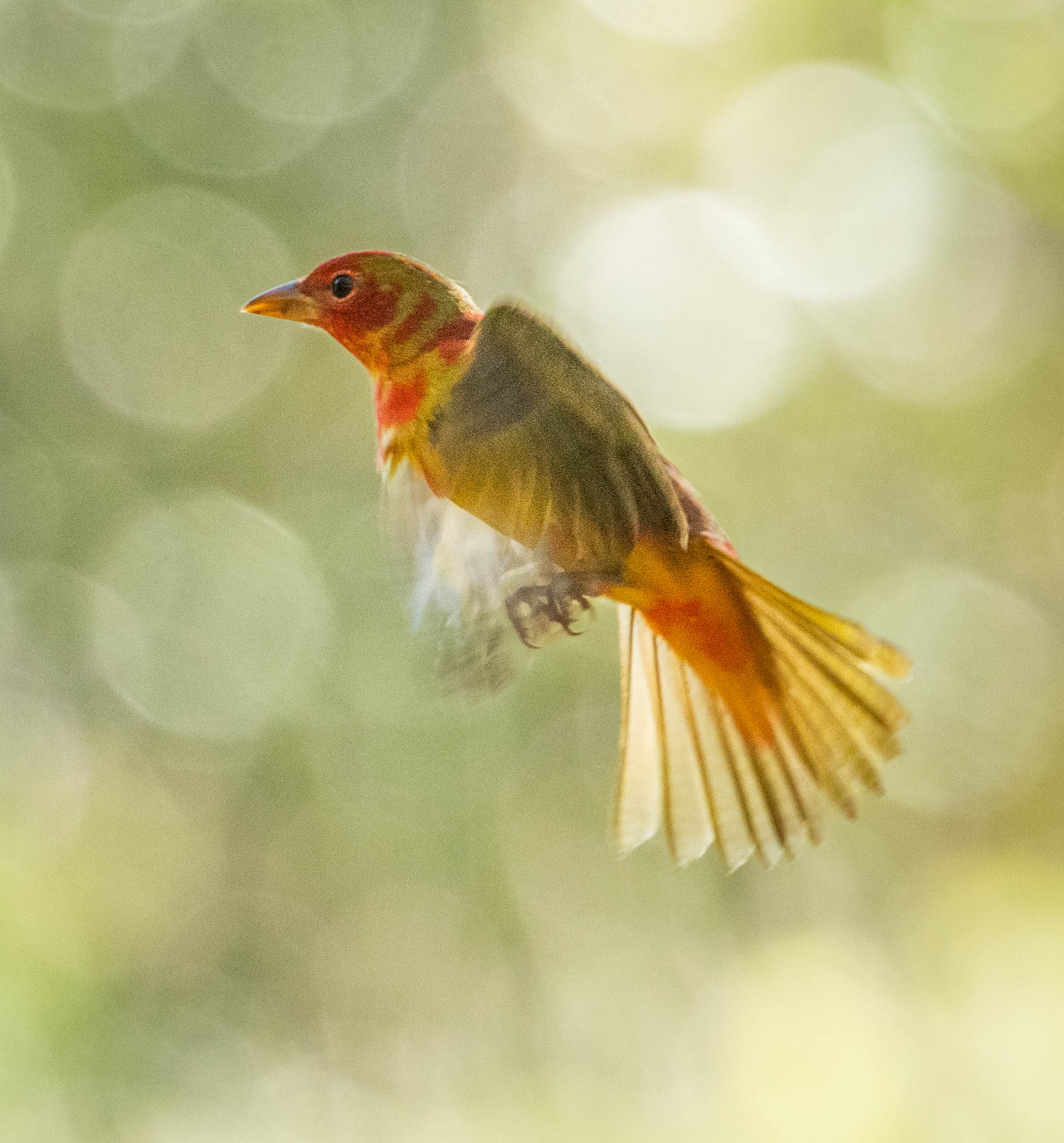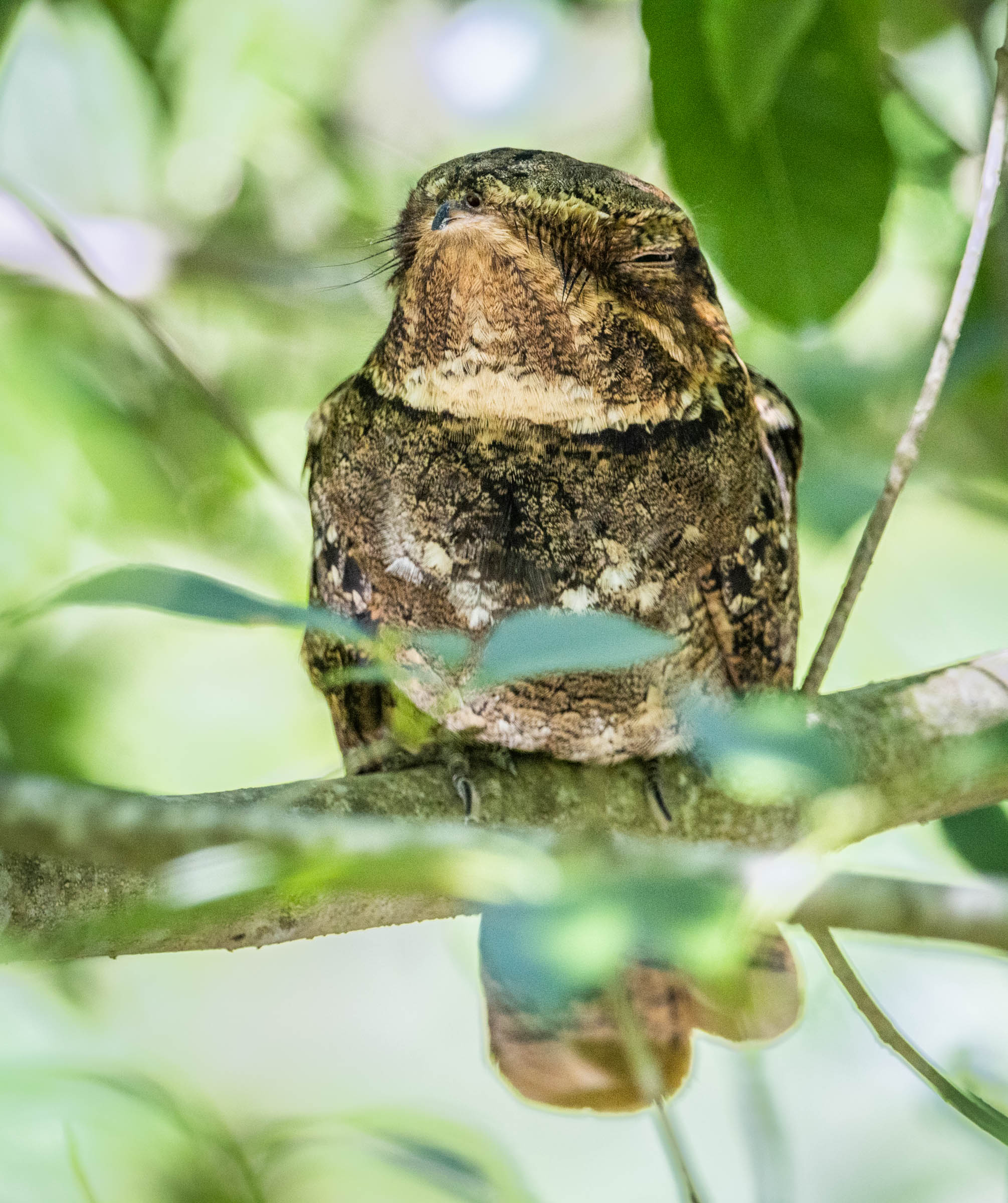I just returned from a 10-day visit to the Texas Gulf Coast, with a focus on finding and photographing birds. Typically, when I take trips like this, birding is just one aspect. But this time, birds were the main focus. April is the middle of spring, when billions of birds migrate north (and thousands of birders migrate south to intercept them). The Gulf of Mexico is a major obstacle for these birds. They have a few routing choices… Island-hop through the Caribbean, Cuba, then to Florida, or fly straight across the Gulf in one manic push to the other side, or squeeze up the west side of the Gulf – right through the southern part of Texas. Birds use all three approaches, but many take the latter option. The result is a mass of birdlife streaming up the Texas gulf coast.
This part of Texas has an eclectic mix of species throughout the year. But at the peak of migration, that population and variety is multiplied many times over.
I visited toward the latter half of migration, visiting a number of points from around Corpus Christi, southward to the Rio Grande Valley. I’m not an expert on the area, but you’re thinking of visiting the area for the same reasons, you might find some interest in my observations in the post below.
I flew into Houston, then rented a car and headed a few hours south. My first stop was the town of Port O’Connor. This seemed like a natural catch-point for birds – at the end of long land-mass, with a few miles of ocean to the next point northward. There is a park with a very short boardwalk at the north end of town. I arrived in the evening, and got my first small taste of the Gulf Coast migration. I saw dozens of bird species there – from large shorebirds to small songbirds, hundreds of individuals. Here’s just one sample, a Least Flycatcher.
I re-visited the area in the early morning, but true to form, all the migrating birds had left. They generally fly all night, and land sometime in the morning, when the bugs are more active. It was quiet, so I headed onward.
Somewhere along the way, I spotted this Cattle Egret crossing a road. These are local, not migrating birds… True to their name, they are often seen near cattle – of which there are plenty in Texas. They’re fairly common, but I didn’t see many more of them throughout the trip.
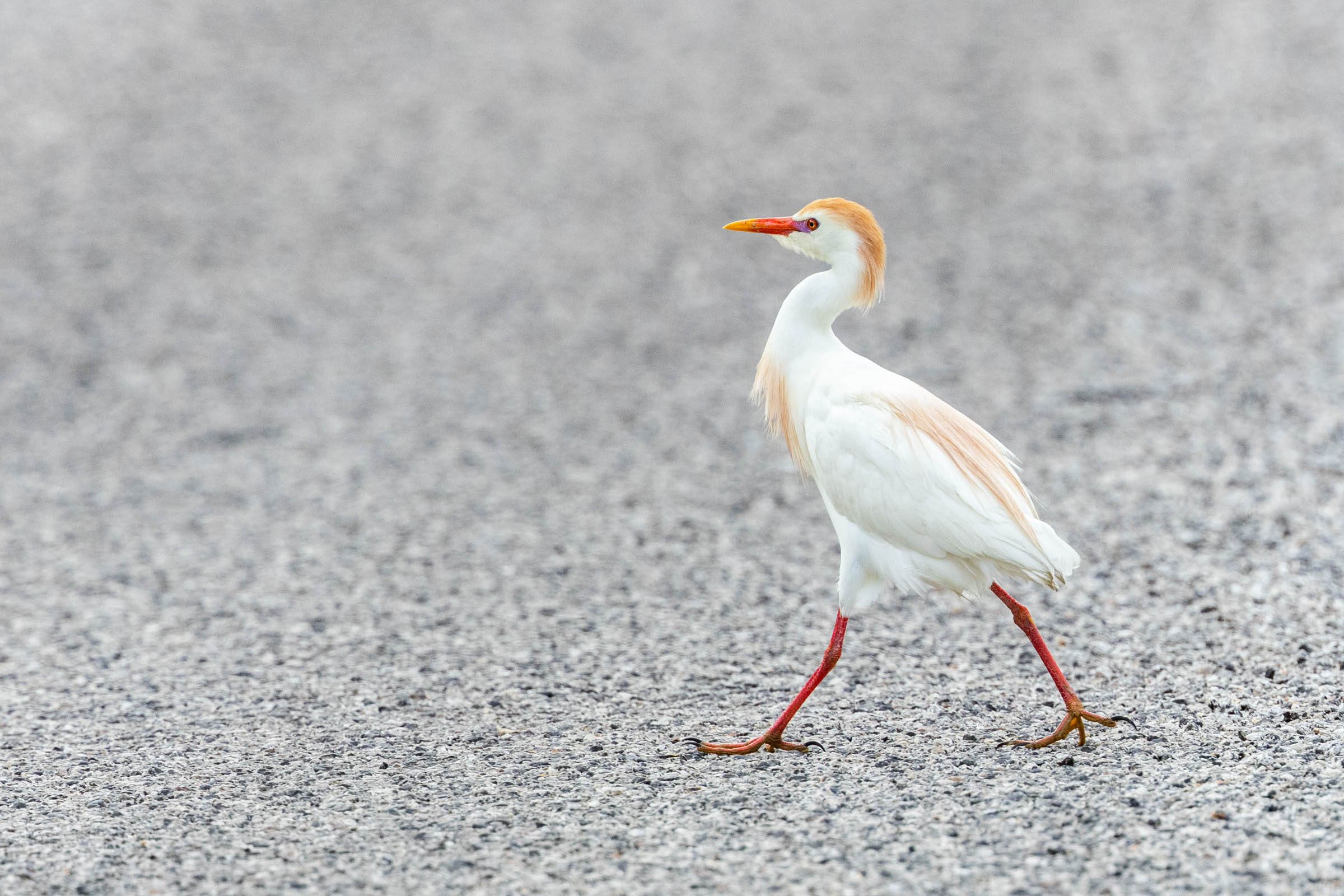
In the same area, I heard an unfamiliar bird signing from a roadside bush, then overhead on a power line. This was about the easiest ID of a “lifer” bird I’ve ever had – a Painted Bunting. There’s nothing else like them. They were not exactly common, but I did see them in a few locations, as you’ll see later in this post.
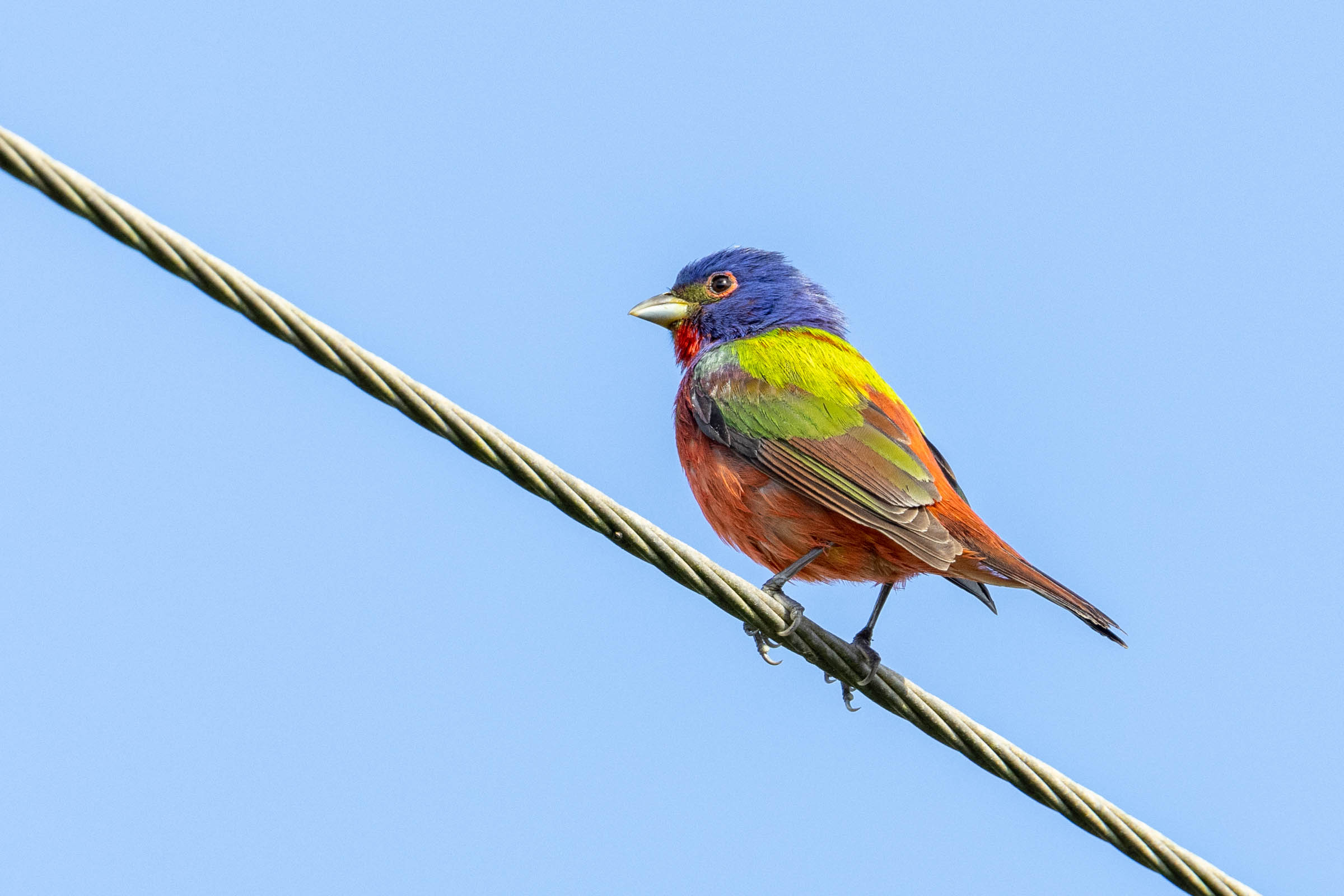
I soon arrived at Aransas National Wildlife Refuge. This place is probably most famous as the wintering grounds for a number of very rare Whooping Cranes. But those had flown north a month earlier. This Anhinga stuck around though.
The Little Blue Heron starts out white, and gradually becomes a deep blue. This one was likely about a year old, just starting to transition to adulthood.
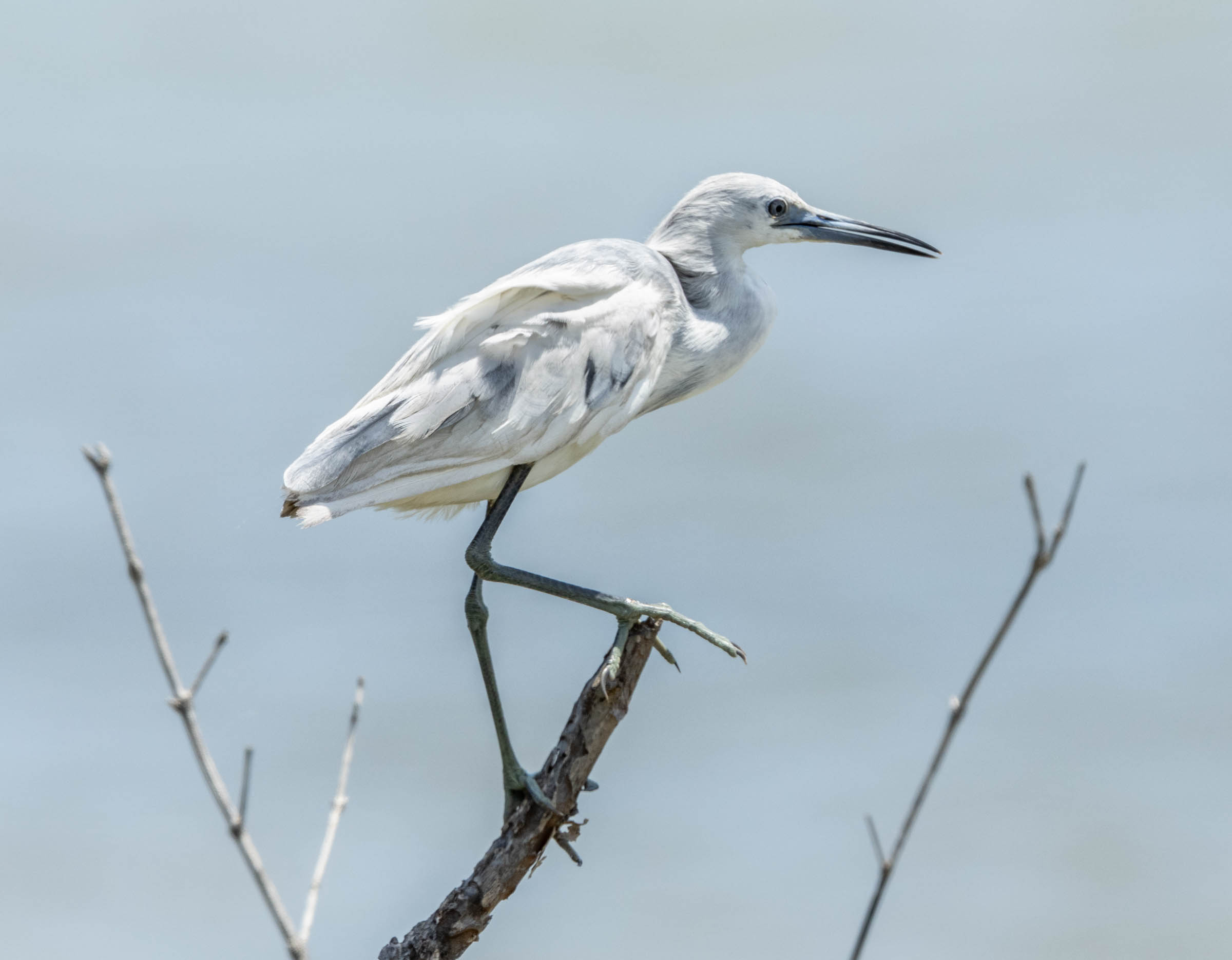
The next morning, I joined an organized tour of King Ranch. That’s really the only way you can visit this famous spot. King Ranch is part working ranch, part hunting lodge, part wildlife sanctuary… and part of probably a lot of things. The ranch is huge – 825,000 acres in south Texas, mostly just south of Corpus Christi. Texas doesn’t have the vast expanses of public land found throughout much of the rest of the west. These huge private land holdings are generally inaccessible. Thankfully, King Ranch both has a thriving bird tour program, and manages the habitat well.
We visited the north part of the ranch, which has a mix of rolling parklands and lakes, plus a vast area of sometimes-flooded farm fields where shorebirds gather. If you’re planning a trip, you might hear more about the southern part of King Ranch, the Norias Division, where some more exotic species can be found, like the Tropical Parula and Ferruginous Pygmy-owl. By most accounts, the Norias Division is really something, but it’s also an extra hour each way from Corpus Christi. Anyway, maybe a visit there is an excuse to return in the future.
This Curve-billed Thrasher was nesting in a cactus, and skulking about the grounds.
I’ve been wanting to see a Northern Bobwhite for some time. Without warning or fanfare, one appeared before me… ok, it was attracted by some seeds on the ground near the King Ranch headquarters, but it’s still a wild bird. Northern Bobwhite can be found throughout the area, but this was the only one I saw on the trip.
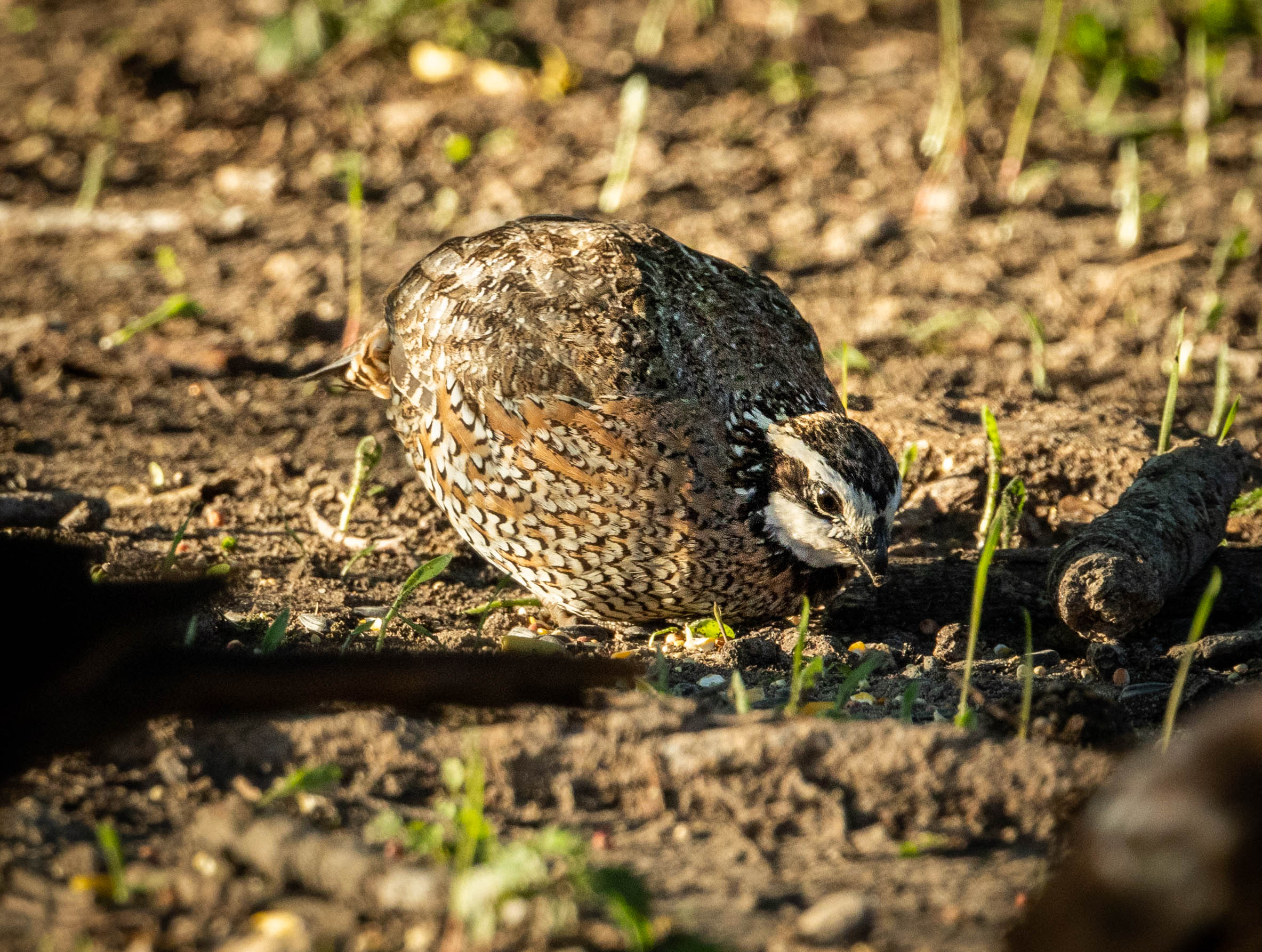
It always feels appropriate to locate a Greater Roadrunner on a road… running. These are well-named birds – here ruffling its feathers just before heading on its way.
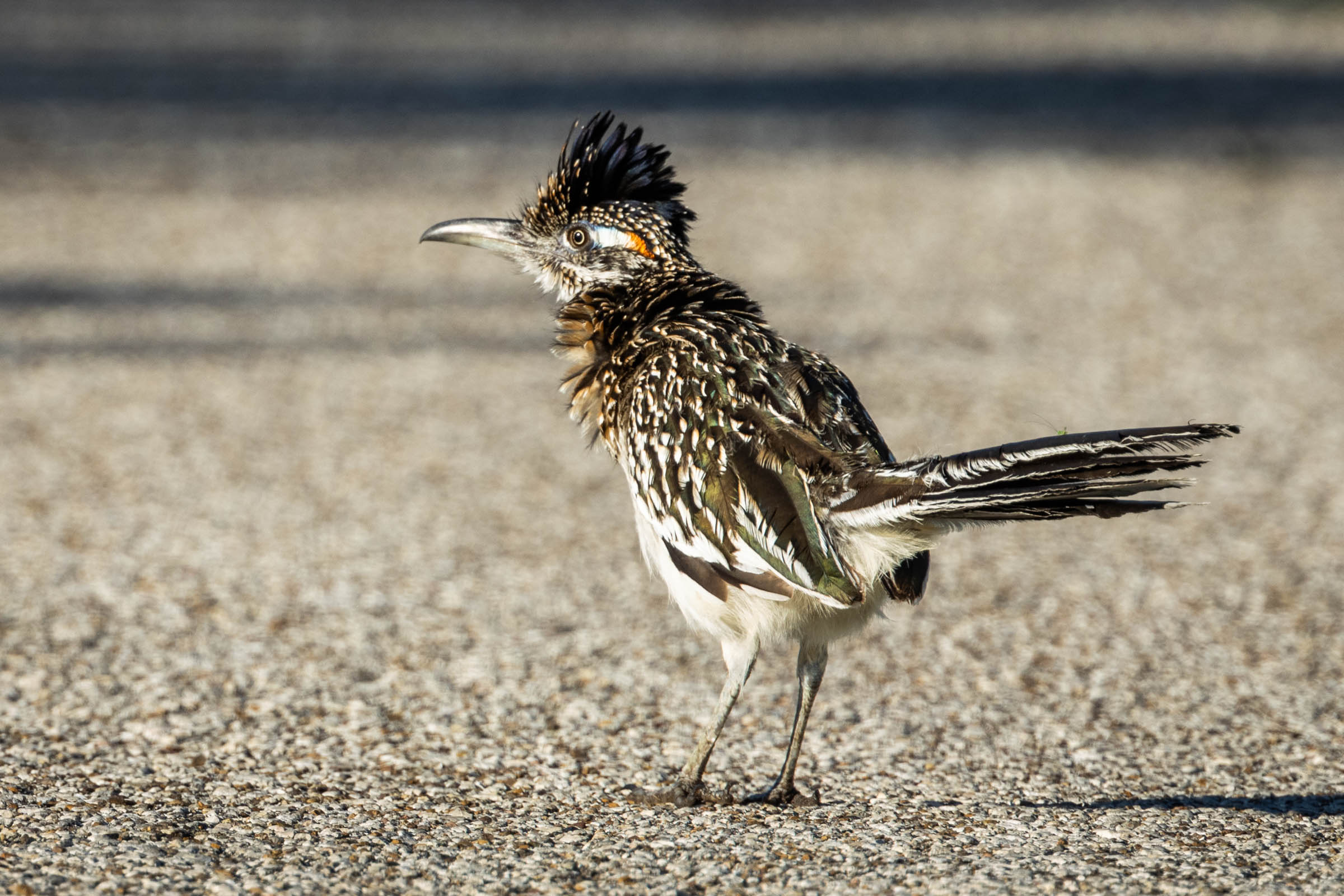
If you take a van tour like I did through King Ranch and are interested in not just seeing birds but photographing them, getting the front seat is a big deal. A number of the birds in this section were “shot from out the car window”. Shooting through the glass at the back of the van just isn’t the same. Plus, it’s a pain to crawl way back there. We did stop and get out a number of times, but you never know when a new bird will appear… Like another Painted Bunting.

The Eastern Meadowlark is one bird that’s much easier to approach from a car. The car acts as a sort of blind. Get out of the car, and the bird will fly away from much greater distances. That said, I was able to get fairly close to a number of others on foot, much later in the trip.
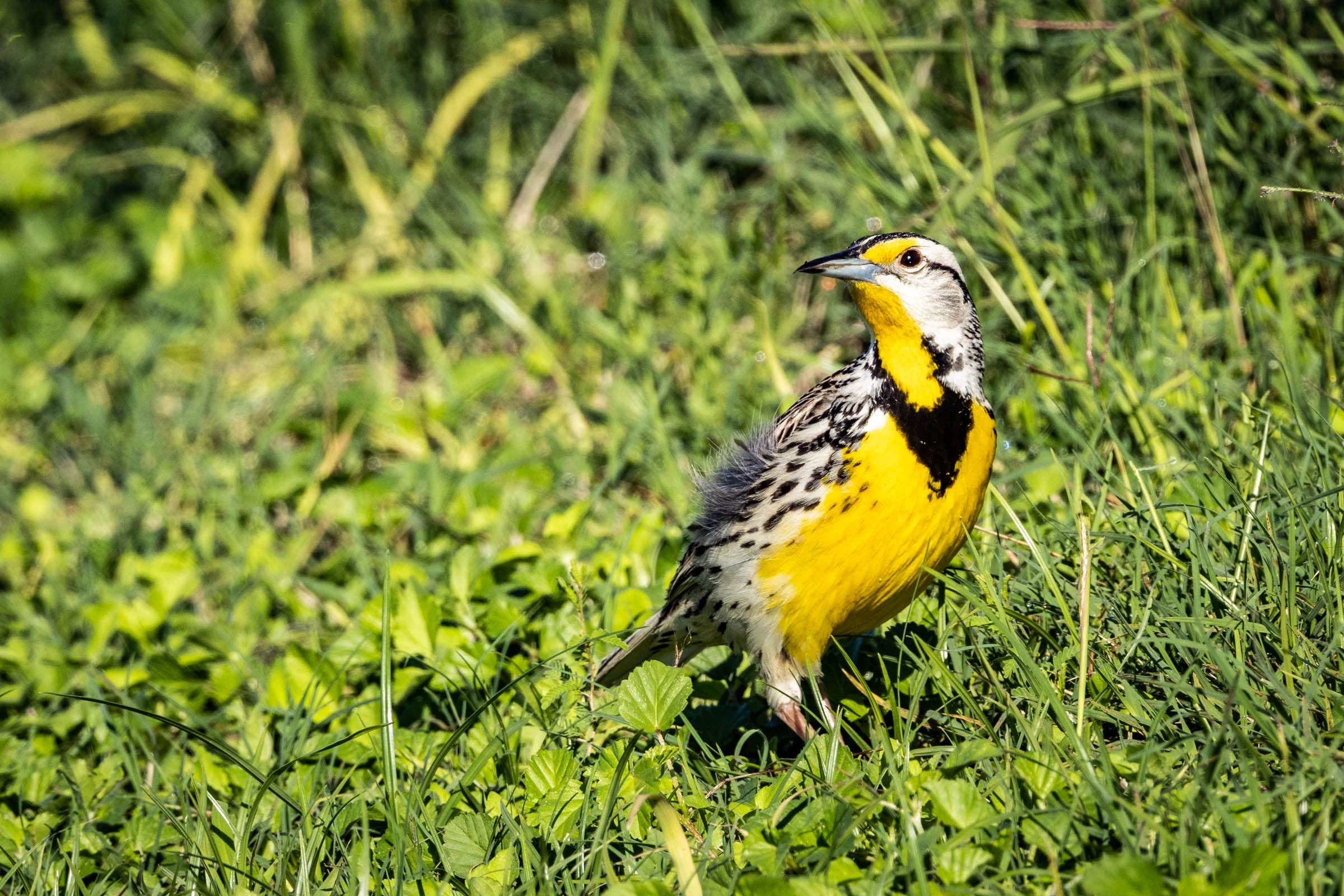
The Scissor-tailed Flycatcher is another of those birds I’ve been familiar with most of my life, but never seen until this trip. I saw them in a number of places throughout south Texas, usually perched conspicuously on bare branches or fences, going after flying insects… as flycatchers do. The first one I saw was a day earlier, from a car going 70 MPH. We slowed down to get a better look at this one.
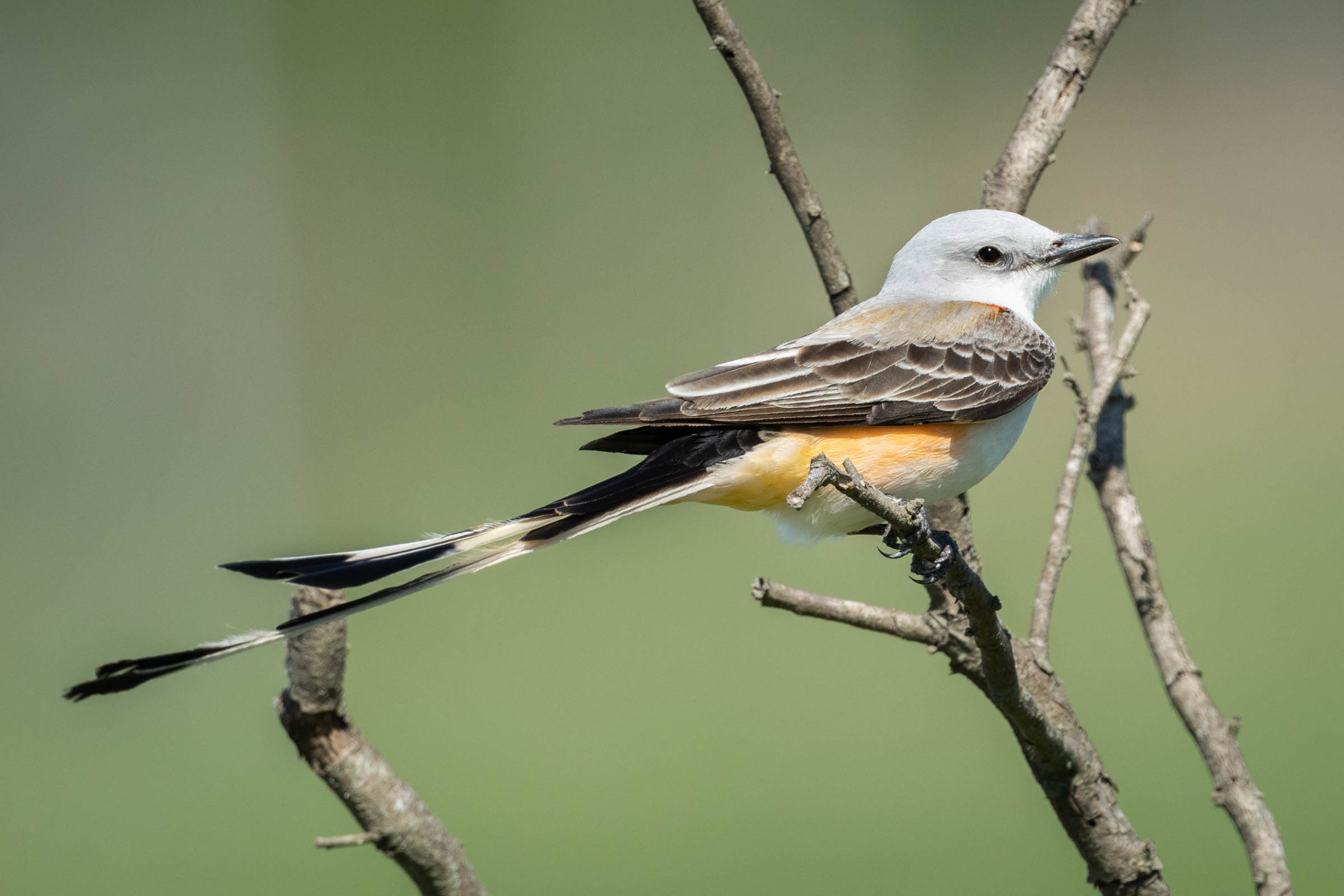
The Upland Sandpiper is another well-named bird… though, it doesn’t seem to like sand. It’s typically found upland, in short-grass meadows resembling tundra.
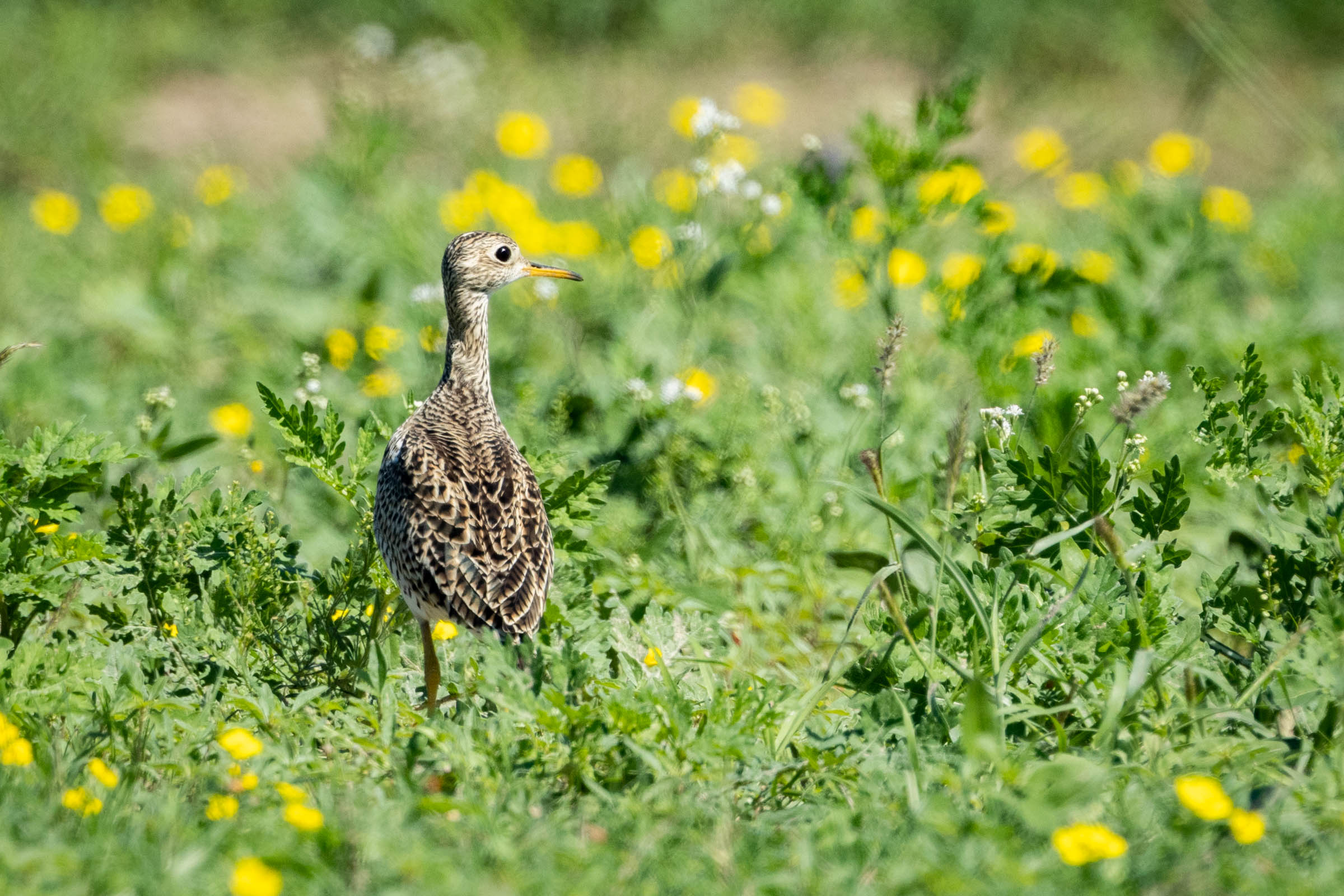
The Least Grebe is another bird I saw in only one location – in King Ranch. They’re not uncommon in the area, but I just didn’t get lucky again. I saw these from some distance.
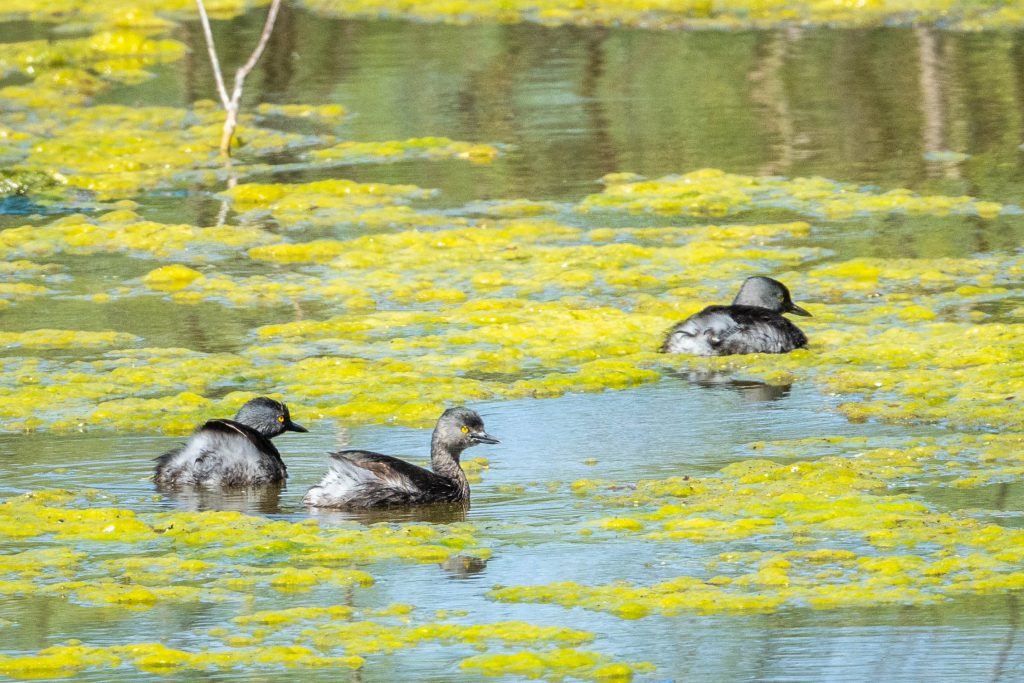
Part of our route through King Ranch was along vast farm fields that had been partially flooded by recent rains. This area doesn’t get a lot of human visitors (though, there was a steady stream of farm equipment tilling and planting). The Hudsonian Godwit is a large, shy sandpiper. I was happy to just get a brief distant glimpse.

Nobody told these Common Nighthawks it was daytime. They were darting about the sky over the fields – Courting? Chasing? I like to think they were just having fun.
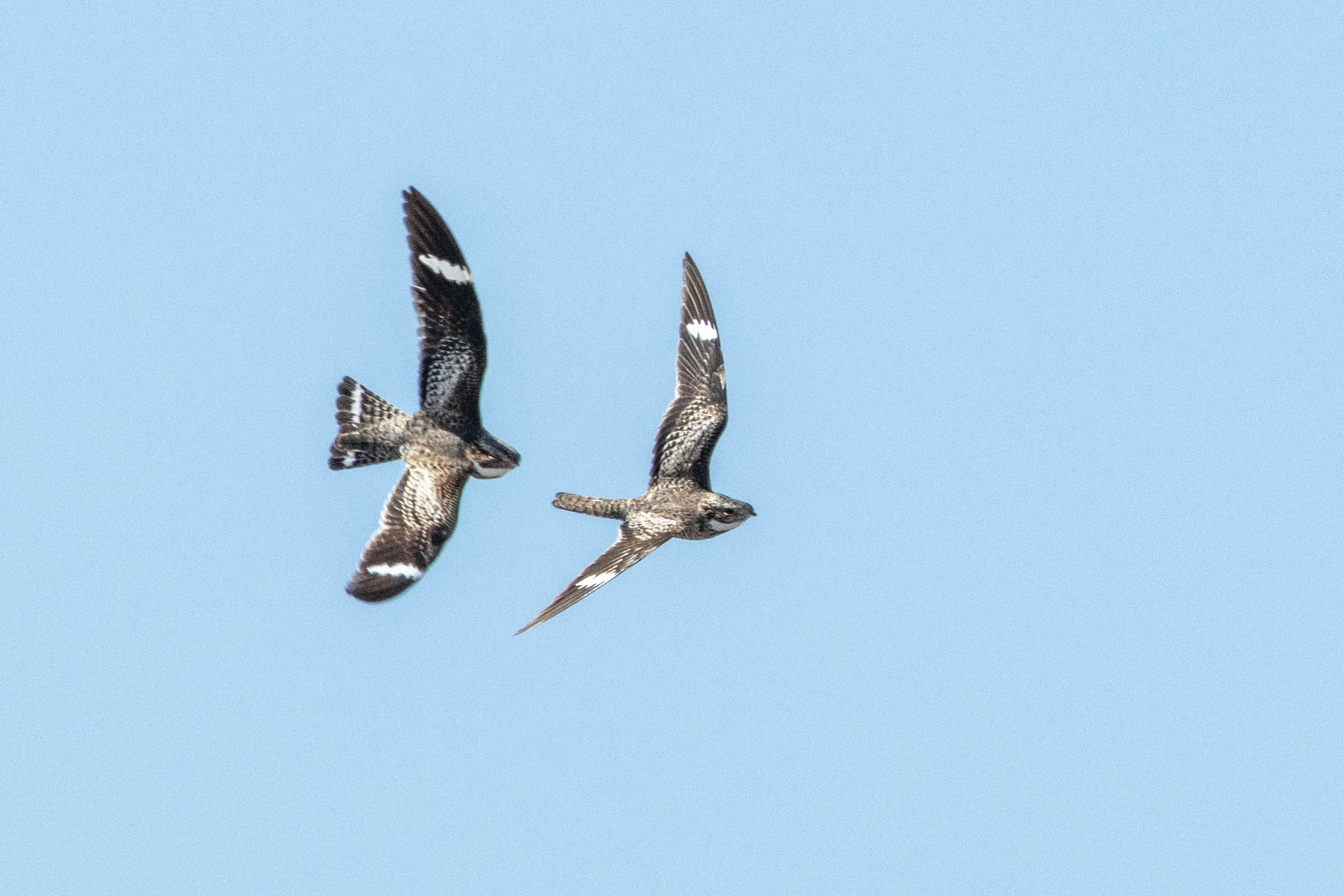
The Common Nighthawk might be conspicuous in the air during the daytime, but as soon as they land, they melt right into the landscape. The only way I was able to locate this one was because I saw exactly where it landed.
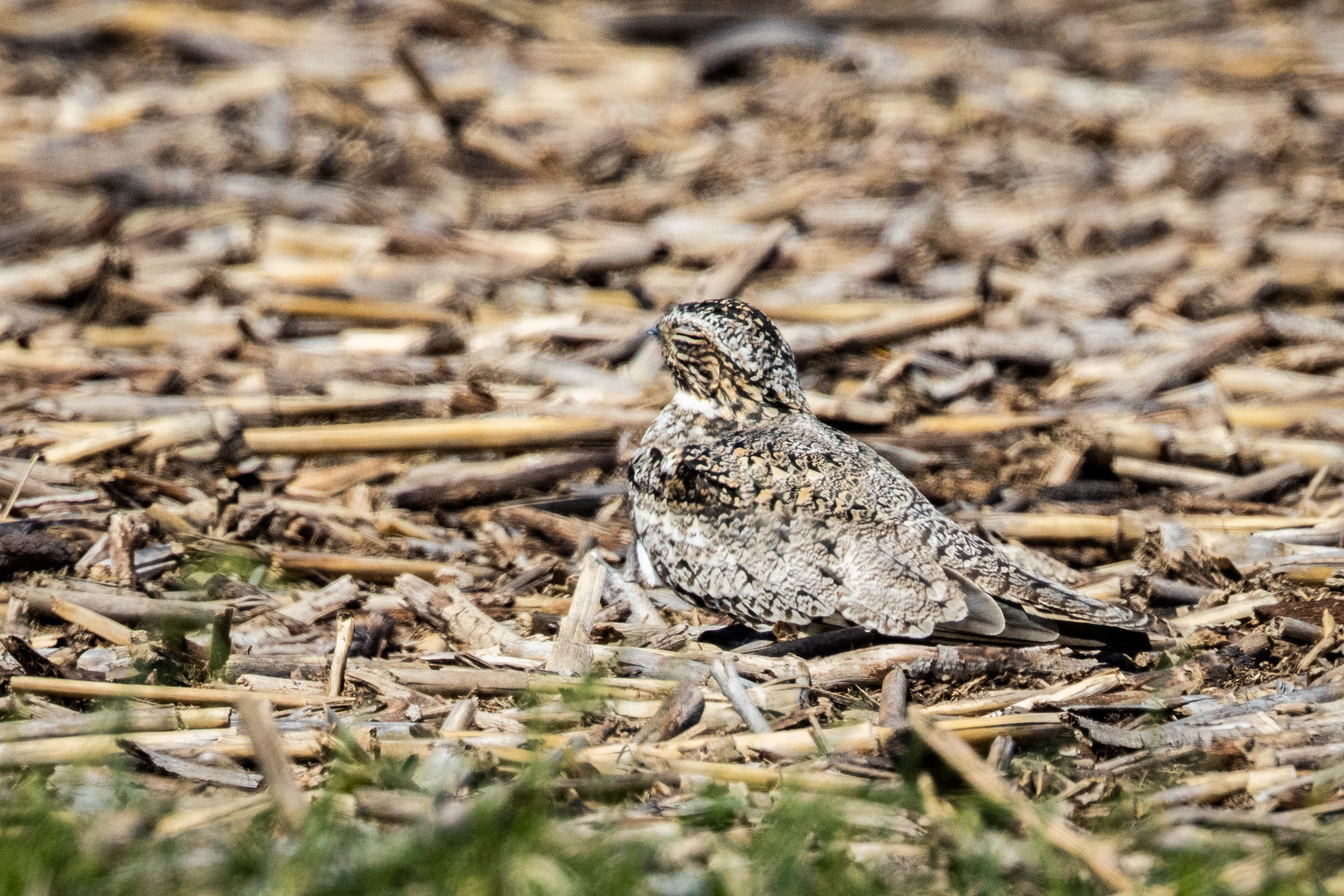
In total, we saw 83 unique species in the morning, and 39 in the afternoon. The images above are just a small sample of it.
The next morning, I took another organized trip. But this time, the van was simply a vehicle to get from location to location – no looking out the window from the moving vehicle, so getting the front seat didn’t matter. This particular trip was a bit of a wildcard, up to the trip leaders to pick whatever locations they thought would work best.
The first place we visited was the Oak Motte Sanctuary in Packery Channel. This small park is on Padre Island, just west of Corpus Christi. It’s a small bit of great habitat in a local landscape that is otherwise filled with buildings and roads.
The trees and bushes in the park and surrounding neighborhood were crawling with migratory warblers, orioles, tanagers and more. This Black-and-White Warbler paused for only a moment on the branch of a tree.
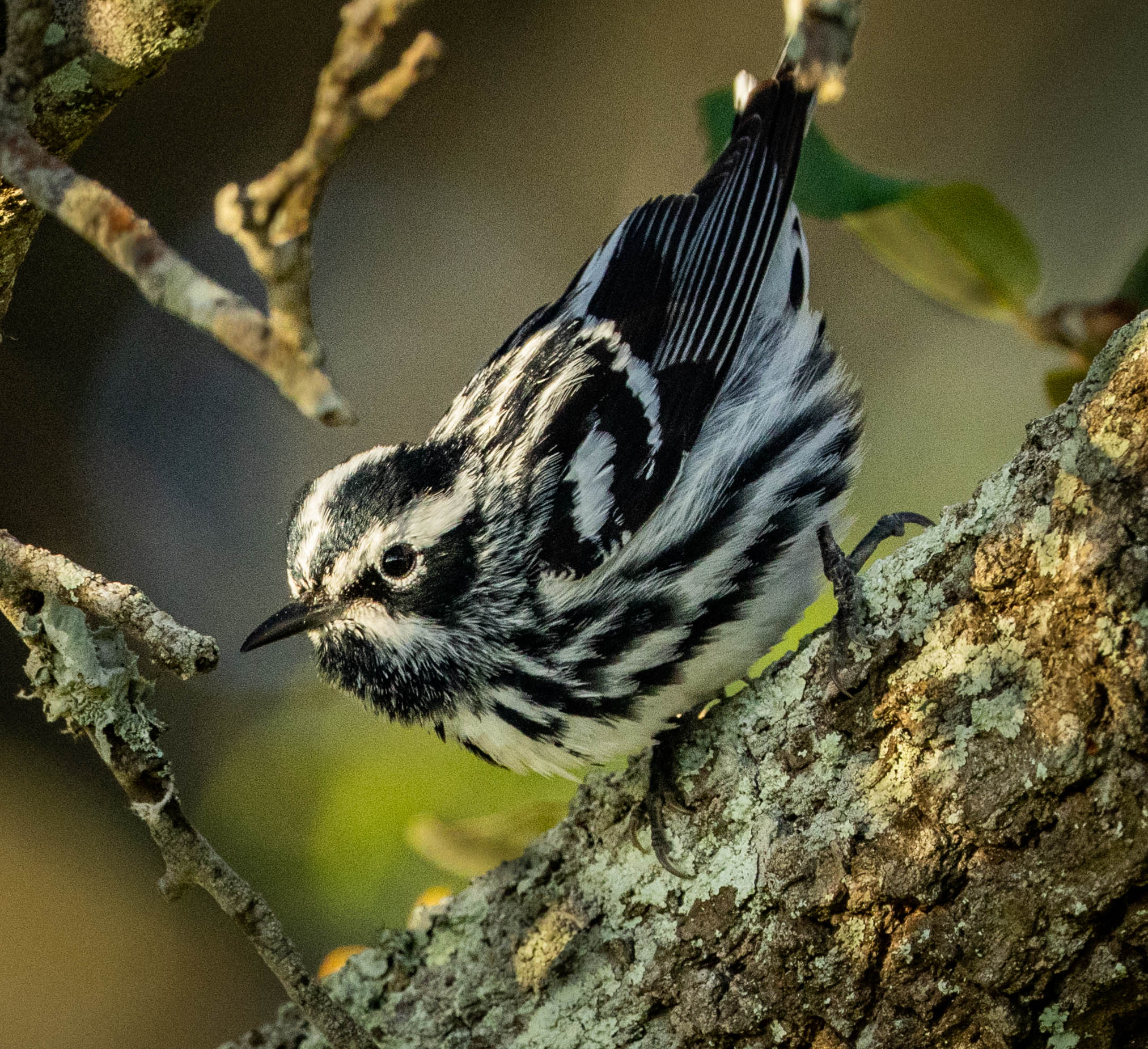
The Scarlet Tanager is such a striking bird. This isn’t the best view of one, but even half-obscured behind a bush, these are such neat birds.
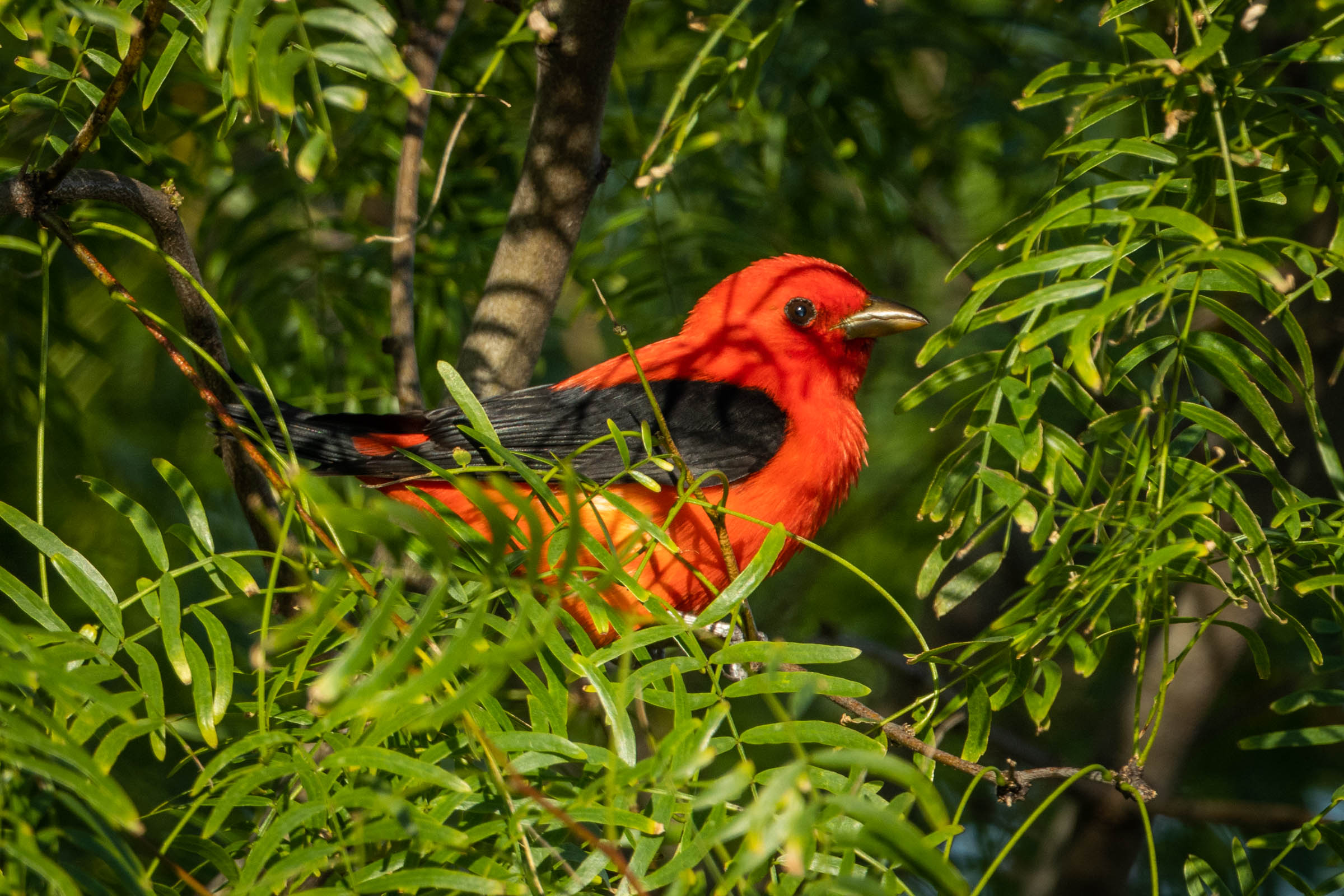
This Black-capped Vireo caused a stir with the local birding experts. The bird is native to the central Texas hill country, which doesn’t seem too far away. But this is Texas – everything is far away. They’re almost never reported in the Corpus Christi area. But, there was a huge wind storm the previous day, blowing things eastward… and apparently, that included at least one Black-capped Vireo. This isn’t the best angle, but enough to ID. I believe it’s a female.
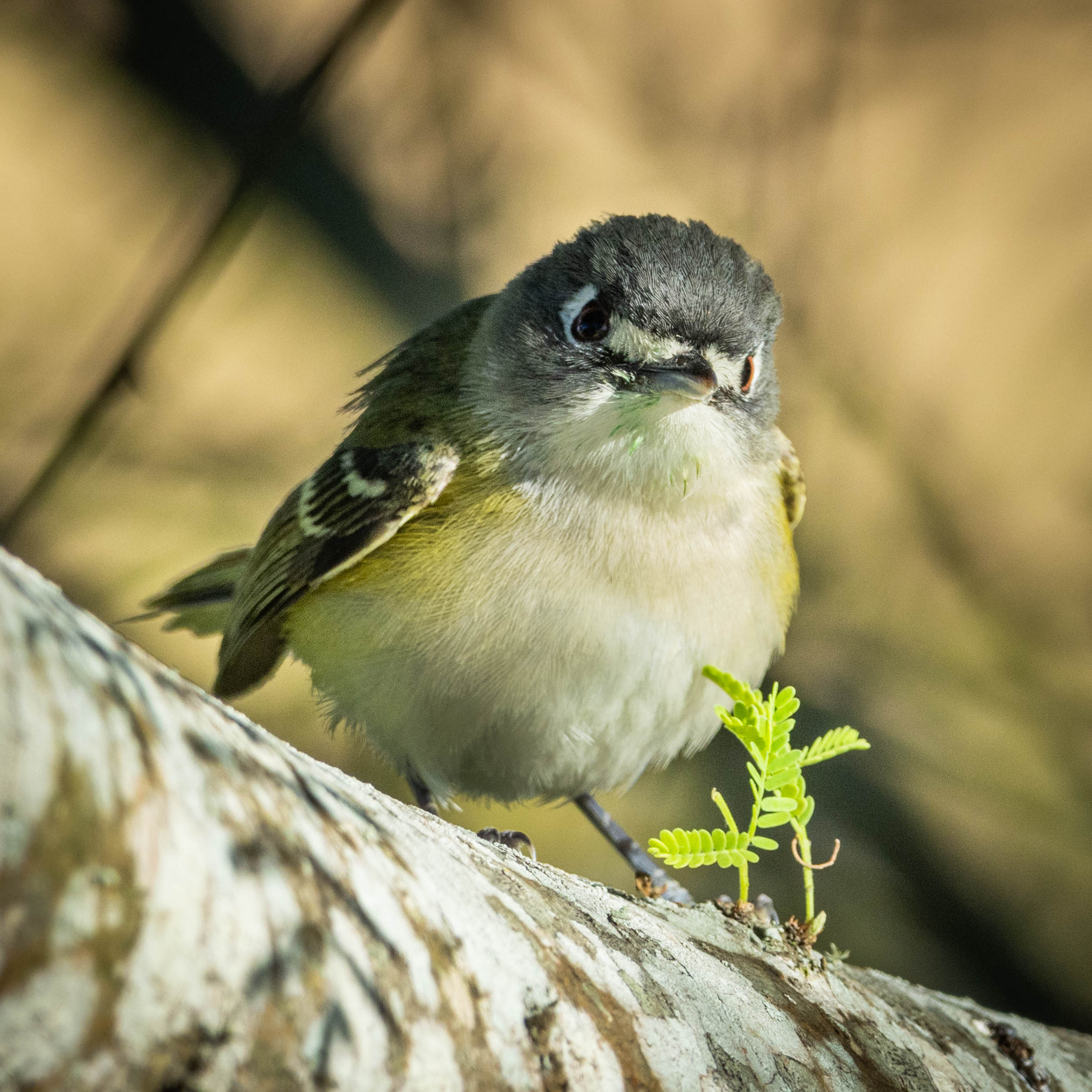
Meanwhile, Tennessee Warblers were poking through the flowers, I think looking for little bugs hiding among the petals.
Many of the homes in this area were fully on-board with the bird bonanza. They had feeders and fruit set-up. One house even had a bunch of photo blinds in the driveway. This Summer Tanager was just one of the colorful visitors.
A couple more Tennessee Warblers got into a heated discussion about this orange. There was plenty for everyone.
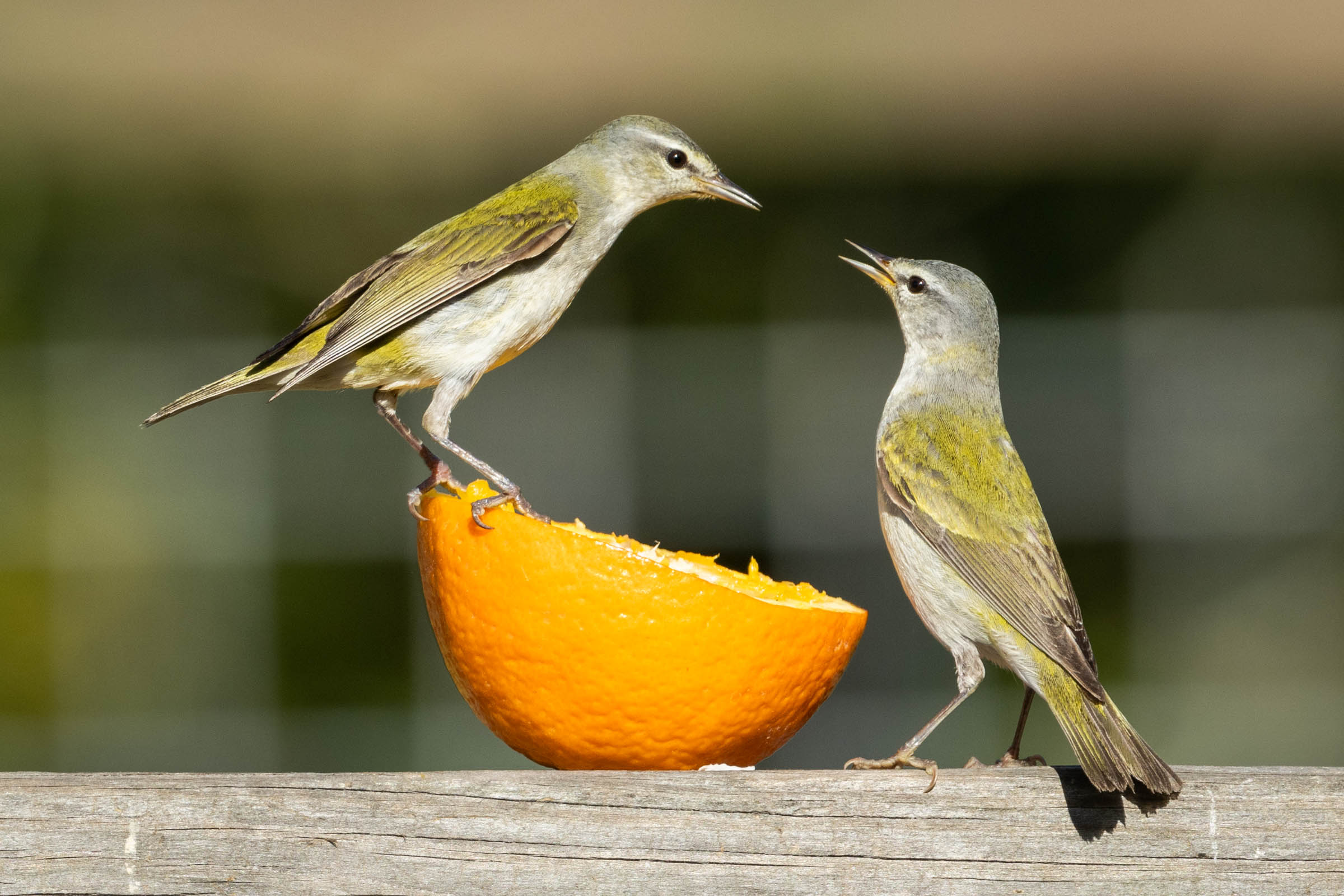
Why not throw Rose-breasted Grosbeaks into the mix? This image doesn’t really show the bird’s signature red breast, but I thought the pose was kind of fun.
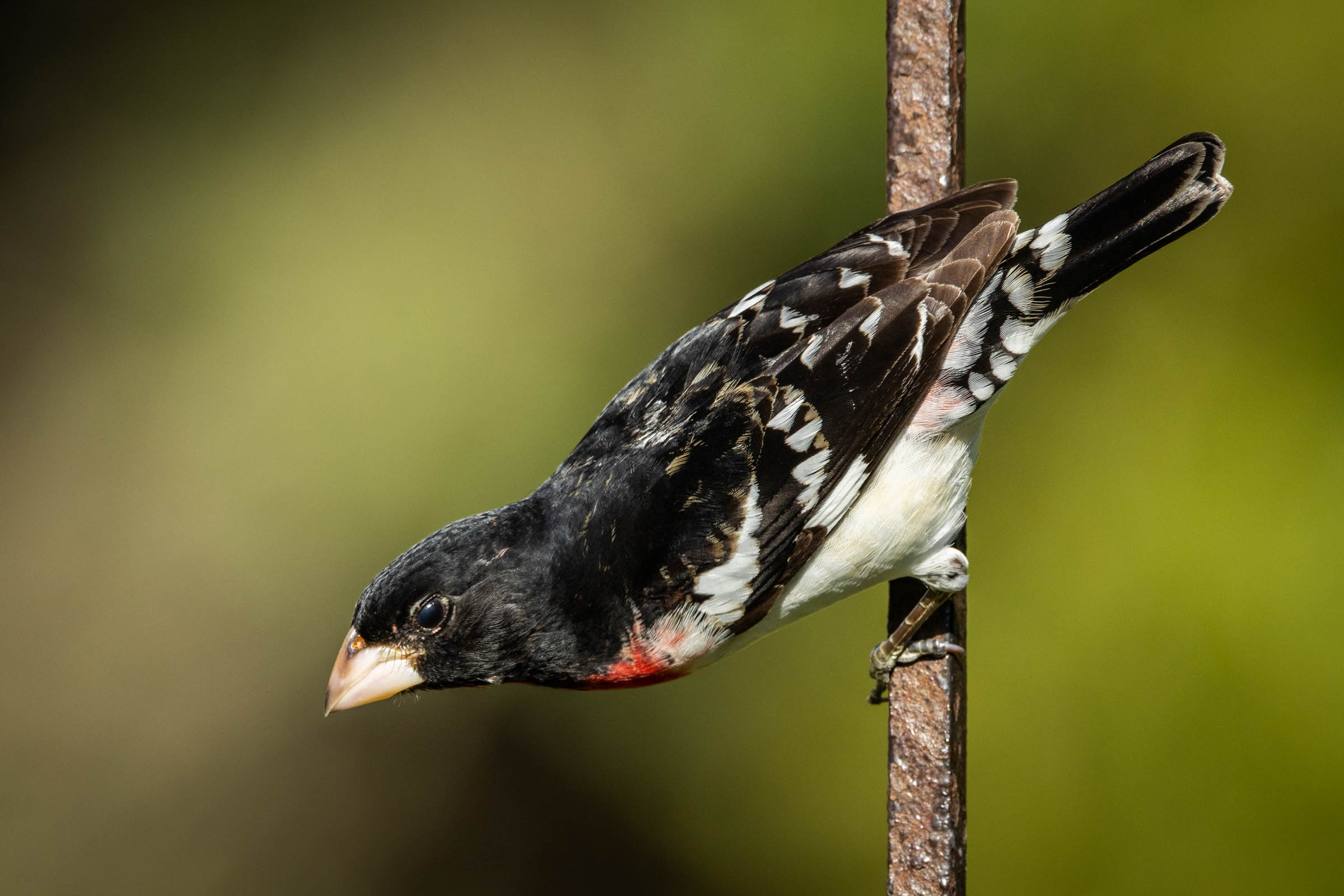
Later, we moved on to another park in the Corpus Christi city limits… and honestly, I’m not sure where it was. I was too busy gawking at the birds to record exactly where I was standing. But I think it was just west of the downtown area. Anyway, the park was no secret, it was crawling with birds, and birders – it seemed like all the locals knew this was the spot to be.
High overhead, a series of “kettles” of Broad-winged Hawks passed by. Each kettle consisted of dozens or even hundreds of these birds riding thermals. They use these to rise to great heights then soar northward with nearly no effort. A few other species were mixed-in but it was mostly Broad-winged Hawks… and mostly younger birds – quite a sight!

One advantage to having so many birders combing through a small city park, is that someone is likely to find a gem like this Chuck-will’s-widow – sitting motionless on a branch, waiting for night to fall so it can go snatch-up bugs. These are difficult birds to find when exploring solo.
Of course, many other birds were filling the park… This Blue-headed Vireo was just one of them. Ovenbirds and Northern Waterthrush were just a couple of the others present.
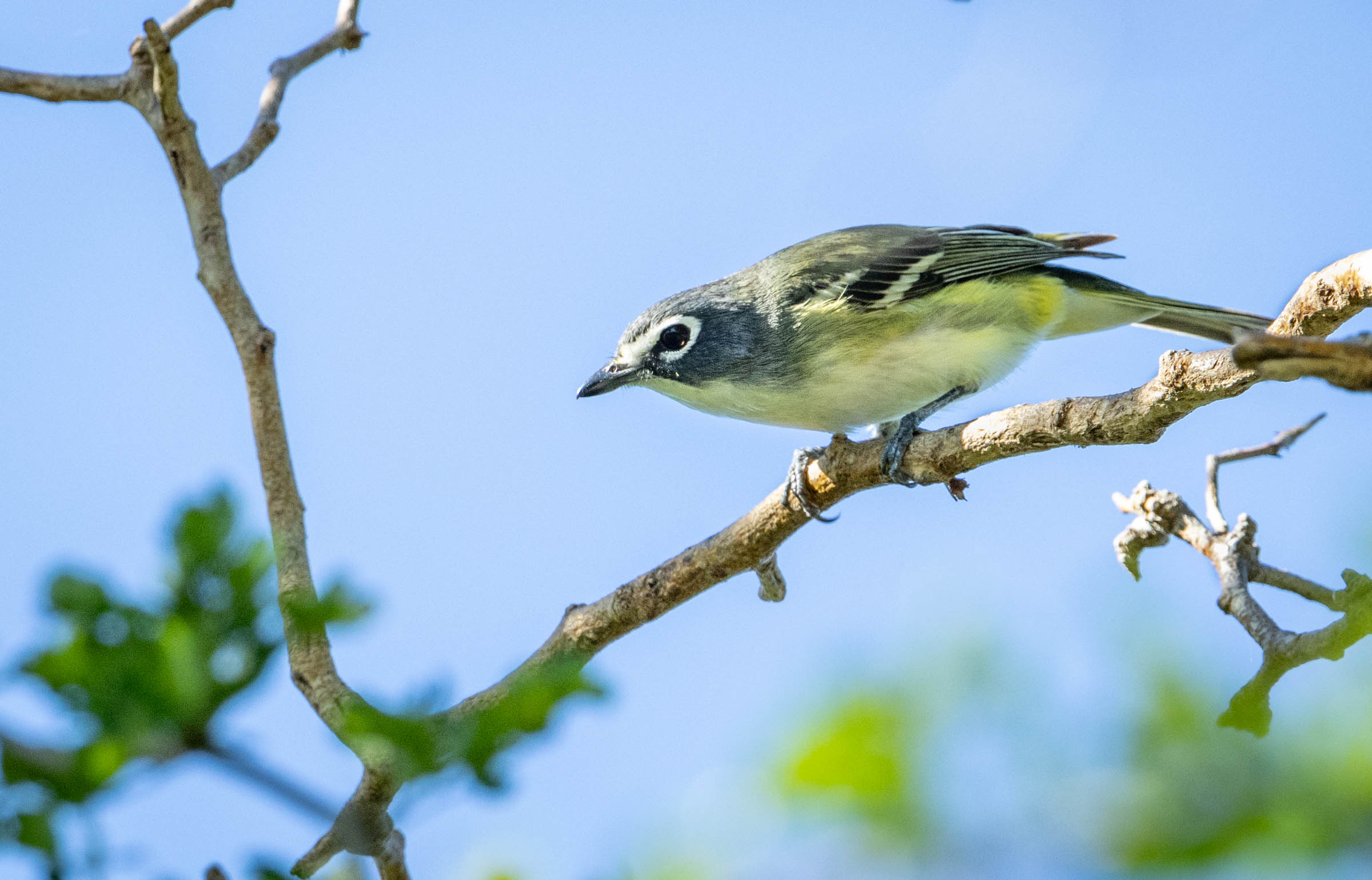
Ok, I split this post into two parts, just because there are so many photos to load. On to Part 2!
